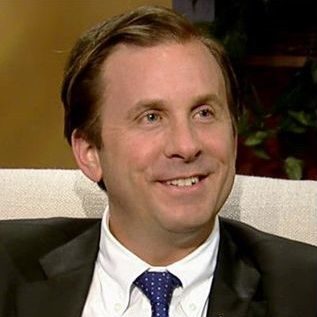“Nature recks nothing of intentions, good or bad; the one thing she will not tolerate is disorder, and she is very particular about getting her full pay for any attempt to create disorder.” ~ Albert Jay Nock
It’s too easily forgotten that “the people” are the market. The previous truth is a crucial one in consideration of what’s taken place in the U.S. and around the world since March of 2020.
In locking “the people” down, in taking away their freedom to live, work and operate their businesses as they wanted, politicians locked down the marketplace itself. That crisis followed the taking of freedom brings new meaning to redundant.
The marketplace that is the people has come to mind a lot of late as studies start to reveal that the various coronavirus vaccines perhaps aren’t as effective as initially assumed. Rest assured that what you’re about to read is not a medical comment. There’s no medical knowledge with which to make comment. On the other hand, you will read why central planning never works, and why public/private partnerships similarly never work.
Let’s start with public/private partnerships. Desperate to come up with a coronavirus vaccine, politicians left and right jumped at the chance to throw billions at pharmaceutical companies. To be clear, this was bipartisan. Though Republicans are normally skeptical about government playing investor, ideology went out the window in this case. Operation Warp Speed supposedly spoke highly of a business-oriented, problem-solving Trump administration.
Except that government can’t play investor. Period. Government distorts precisely because it’s not driven by price signals. In that case, the better question to ask about the virus is what would pharmaceutical companies have done absent the billions thrown at them? Odds are there’s less of a feverish rush to a vaccine given a virus survival rate north of 99%.
To the above, some may shudder. Where would we be without the vaccines? Arguably a better place. This isn’t a medical statement. It’s just a comment on what’s emerging from countries like Israel. Though their population is heavily vaccinated against the coronavirus, though Israel was lauded for its heavily vaccinated population, media accounts indicate that all manner of coronavirus-vaccinated Israelis are contracting – you guessed it – the coronavirus.
At the same time, it’s worth asking who seemingly isn’t contracting the virus as easily? By all accounts, those who contracted it naturally.
All of which raises a question once again: what if there’s no Operation Warp Speed? If so, it’s not unreasonable to speculate that either some participating companies don’t pursue a vaccine at all, some pursue it less feverishly, or a combination of both. If so, are we worse off? Arguably not. And we wouldn’t be simply because the lockdowns couldn’t last forever. Better yet, as Holman Jenkins of the Wall Street Journal has routinely pointed out, for the longest time the CDC was clear that eventually everyone was going to be infected with the virus.
If so, as in if government doesn’t play investor, maybe there’s still no vaccine. Except that if no vaccine it’s more likely that the healthy, and in particular the young and healthy, achieve immunity the natural way. Really, did anyone think they were going to hole up forever in wait of a vaccine? The question answers itself.
Put another way, if markets are allowed to work, as in government doesn’t play VC and lockdowns aren’t needlessly enforced, probably more than a few of us around the world get back to our lives. And in living our lives, many would contract the virus on the way to some form of natural immunity. Nothing medical about that. Better yet, by living freely we would learn from each other’s free actions how the virus spreads, what behavior is most associated with spread and immense sickness, and also the behavior most consistent with not contracting the virus.
The behavior associated with not getting the virus is particularly crucial. It is because not everyone would “get back to their life” sans a vaccine. Just as some young and healthy would quarantine without force, the old and ill would likely self-select out of re-acquainting themselves with normal living, which is the point. When markets are free, as in when people are free, people make different choices. As evidenced by how many virus-related deaths are associated with nursing homes, the end of lockdowns wouldn’t mean that the elderly would suddenly cease protecting themselves. Markets are wise. They reflect myriad choices based on myriad unique conditions.
To which some will say that the combination of freedom with a lack of vaccines would result in millions of deaths. Except that it wouldn’t. The previous statement isn’t a medical one. It’s just one of common sense. People respond to incentives. If living freely amid a spreading virus were a death sentence, free people would choose quarantine. Or they wouldn’t.
Long before the vaccine was created, market signals from China indicated the virus wasn’t terribly lethal for the healthy, but much the same was revealed here. In other words, in a world without a vaccine, the healthy were going to get the virus, but the natural immunity achieved was going to render them less liable to get it again, and spread it.
Except that government spent billions, and created an inventive among people to avoid human contact based on the promise of a vaccine; as in government billions distorted human action. Rather than get on with their lives, people to varying degrees hid until they could be vaccinated. This market distortion delayed valuable natural immunity in favor of a vaccine that seemingly isn’t the prophylactic so many experts billed it to be. More important, the promise from politicians that life would be normal if only we locked down until public/private partnerships rolled out vaccines gave us distorted assumptions about how we could live post-jab.
In short, lockdowns combined with government as investor distorted the actions of the actual marketplace in all manner of ways. It seems nature is now getting her “full pay” for these needless interventions.
Reprinted from RealClearMarkets
Join the conversation:


Published under a Creative Commons Attribution 4.0 International License
For reprints, please set the canonical link back to the original Brownstone Institute Article and Author.









